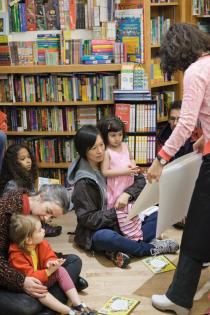For all these reasons, I encourage educators to abandon common racial scripts and honor the multiplicity of identities that make each of us and our students unique human beings. Rather than being colorblind or post-race, let’s dissect the racial codes that we subscribe to and analyze systemic racism. Using mixed-heritage stories and experiences are a wonderful way to do that.
Mixed-heritage narratives provide us with the opportunity to teach children from an early age that having a certain skin color, cultural background, or country of origin doesn’t determine a person’s value, despite messages we see in society.
We can use mixed-heritage stories to understand the language of identity. What words do people use to identify in different places and at different times? Why do some folks choose to identify as “black” versus “African American” or “Afro-Latino” versus “Puerto Rican?” These choices in language are significant and often reflect sociopolitical issues that an individual or group of people are facing. When we provide this social context to individual narratives, adults can guide children in accepting and defining themselves with a robust language of identity.
Children can understand the complexity. They can, with guidance and time, understand that some apples are red, but not all apples are red and that some bears are brown, but not all bears are brown. Similarly, they can understand that some girls have long hair, but not all girls have long hair and that some people from China eat with chopsticks but not all people from China eat with chopsticks. Our job is to be specific – and accurate! – when we speak about people and groups of people.
IMAGE: Mixed Heritage Storytime, photo by Willie Davis for Brooklyn Historical Society, 2013


